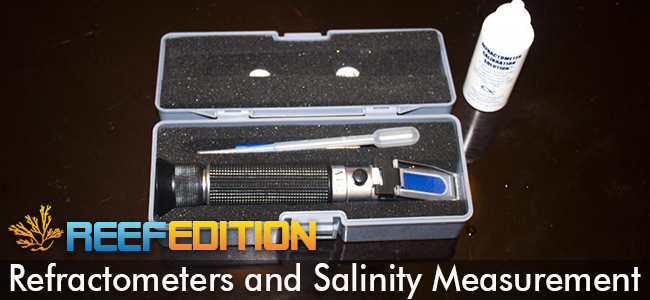Randy Holmes-Farley
Reef Chemist
View Badges
Staff member
Super Moderator
Excellence Award
Expert Contributor
Article Contributor
R2R Research
My Tank Thread
- Joined
- Sep 5, 2014
- Messages
- 67,438
- Reaction score
- 63,835
Reef Chemistry Question of the Day 301
Which of the following is a refractometer measuring to determine seawater salinity?
1. Changes in the wavelength of light passing through the sample
2. Changes in the speed of light passing through the sample
3. Changes in the intensity of light passing through the sample
4. Changes in the frequency of light passing through the sample
Good luck!
Previous Reef Chemistry question of the day:

 www.reef2reef.com
www.reef2reef.com
.
Which of the following is a refractometer measuring to determine seawater salinity?
1. Changes in the wavelength of light passing through the sample
2. Changes in the speed of light passing through the sample
3. Changes in the intensity of light passing through the sample
4. Changes in the frequency of light passing through the sample
Good luck!
Previous Reef Chemistry question of the day:

Reef Chemistry Question of the Day# 300: Specific Gravity
Reef Chemistry Question of the Day 300 Which of the following has the highest specific gravity? A. Normal seawater (35 ppt) B. Kalkwasser/limewater (saturated calcium hydroxide) C. Vodka for dosing (80 proof) D. Vinegar for dosing (5% acidity) Good luck! Previous Reef Chemistry Question of...
 www.reef2reef.com
www.reef2reef.com
.



















